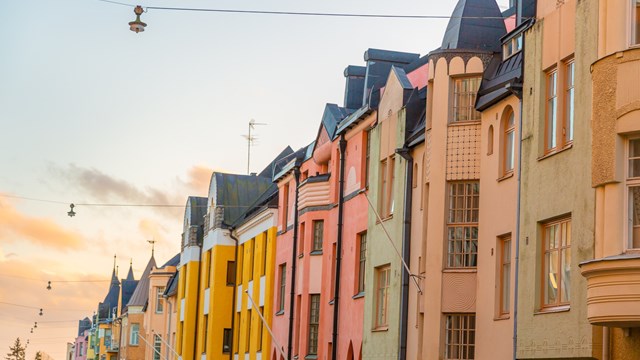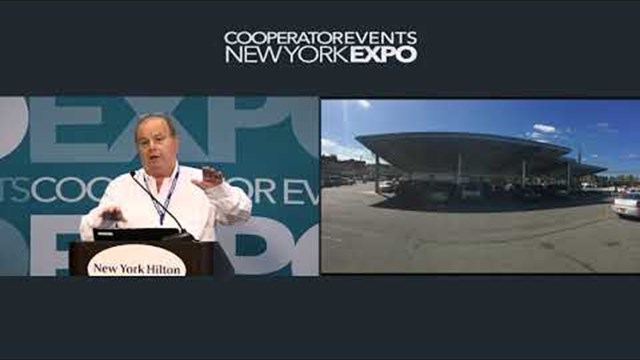
As we know, climate change has far-ranging effects on everything from polar ice caps to coastal shorelines to expanding deserts around the world. The steadily warming planet also affects man-made structures, including the buildings we live in. All the materials that go into building construction—bricks, mortar, steel, and glass, as well as sealants, coatings, and a huge array of other structural and weatherproofing elements—are all designed with climate in mind. In the deserts of Arizona, for example, engineers designing and choosing building materials must take into account that temperatures there can easily reach 120 degrees during the hotter months. By the same token, developers in Miami and other coastal cities must consider how to reinforce their properties against increasingly frequent, increasingly violent hurricanes.
But what about the flip-side of this equation? We may be adjusting how we construct housing in the face of a rapidly changing global climate, but how have our previous choices of building materials—and the ways in which we maintain them—contributed to climate change and its acceleration? What can we do to both lower the impact of buildings on climate change and to protect them from the effects of it?
Chicken or Egg?
Fredric Goldner is president of Energy Management & Research Associates, an energy consulting firm located in East Meadow, New York. He believes the problem of sorting out and reducing the environmental impact of multifamily residential buildings is more complex than a simple analysis of a given building’s carbon footprint. The overall picture is multi-layered, involving both initial construction, maintenance after the fact, and the impact of climate change on existing buildings.
“I’m not certain what effect current building construction has had vis-à-vis climate change,” says Goldner. Rather, he says, it may be more instructive to ask, “What have current operational practices done to compound the problem? While building components, type of construction, and equipment can have an effect on energy use—and that in turn has an effect on greenhouse gas emissions and climate change—the way one operates a building has a much greater impact than any of the hardware. We’d all like to think we are doing better construction today than years ago. However, I think most professionals would agree that buildings built many years ago were made to last—perhaps more so than today, though perhaps not intentionally. If you look at a 100-year-old building,” and compare it to something built within the last few decades, Goldner says, “I’m not sure new buildings will stand that test of time. Old buildings are thermally heavy. They have a lot of physical mass: thick walls, multiple layers. They retain heating and cooling better. They are for all intents and purposes more energy-efficient. So in that respect, newer is not necessarily more efficient or better.”
Goldner goes on to say that while our goal should be to build buildings better, “Current operational practices are what’s important. Not the buildings, but what we do with them. It’s a matter of having appropriate independent third parties do tests—combustion efficiency tests for boilers to keep them running at optimum efficiency, for example. What we need to do differently is that we actually need to do it. One of the contributing factors that brought us to this point is that people don’t take care of their buildings. As much as we preach, the number of buildings actually doing [adequate, consistent systems testing] is small.” He says that even if every building adopted and adhered to a rigorous inspection/testing calendar, the problem of a warming climate wouldn’t simply disappear; it’s both more systemic and more complex than that. “But had this been done consistently and correctly,” he says, “the problem wouldn’t be as bad as it is now. An ounce of prevention, as the saying goes. A greater participation rate would slow the climate problem and buy time to come up with more alternatives.”
Kevin Keating, an associate partner with international architecture firm Seldorf Architects, takes a similar view. “Bad maintenance habits have hurt our climate,” he says. “If there’s no sealed thermal envelope, the building systems are not operating at peak efficiency, which leads to energy loss. At the same time, it increases energy use, which causes more negative climate effects. Buildings must have a tight envelope to reduce their carbon footprint, and to make their mechanical systems—especially heating and cooling—more efficient.”
As for what we’re making buildings out of, Keating says, “Building materials themselves haven’t hastened change, but their effect has to be addressed. There’s nothing inherent in brick and mortar that’s problematic. That said, climate change does make it more susceptible to problems for several reasons: both the freeze/thaw cycle and intense rainstorms get moisture into mortar joints, and eventually destroy them. Wind has an adverse effect as well, on both siding and on roofs. Ultimately, climate change has an effect on all building components. Heavier, more intense weather simply has a more intense effect on buildings.”
Short-Run vs. Long-Run
As an industry—and as individuals for whom condo and co-op units represent a primary investment—we must seriously consider how we can improve our properties to cope with both immediate and longer-range issues related to maintenance and the ongoing climate crisis. Climate scientists are unanimous in their findings that climate change is real, and that we have passed the point where it is entirely reversible, though it may still be controllable.
One important—and alarming—aspect of the overall picture is the inevitable rise in sea levels, which will affect our many major urban centers located along the coasts and coastal rivers. As the waters rise, large swaths of New York City, Boston, and Miami will be affected.
That means that basement rooms are a problem. After Superstorm Sandy crashed into New York City in 2012 and caused billions of dollars in water and flood damage to below-grade electrical and mechanical equipment, the city mandated that systems be relocated to higher floors, out of harm’s way. “Many existing older buildings are located in flood plains,” says Keating. “To mitigate problems associated with this fact retrospectively, property owners must pull important operating systems and equipment out of basements and put them as high up as possible out of reach of flood waters.” While likely a smart move, shifting equipment upward isn’t without significant cost. In addition to the cost of physically disassembling, moving, and reassembling crucial equipment, Keating explains that relocating major systems like HVAC, boilers, and elevator machinery will likely take up valuable usable space—space that could otherwise be used for residences or common areas.
All this changes the way architects will design buildings in the future, says Goldner. “If, for argument’s sake, our climate got cooler instead of hotter, our heating systems—which are typically oversized—could handle the problem. But on the other hand, our cooling systems are not necessarily designed to handle an increase in temperatures. Take window-unit air conditioners, for instance. If they’re overcapacity, they’re energy-inefficient. Centralized systems can’t keep up with the increase in temperatures either. So this could become a design issue going forward. But if you tune the boiler, tighten the windows and building envelope, go to LED lights, etc., you lower the loads, which gets you savings, lower costs, lower emissions, and reduced greenhouse gases, which helps to delay the problem.”
Solar panels, Goldner goes on to explain, are a great alternative—where they can be used, at least. “We can ‘right size’ renewable energy when we lower the load in a building, thereby lowering our carbon footprint. Energy storage through renewable sources is also helpful and being used. If you have an inefficient building, you can save money, especially if you have storage capacity for energy.
“Ultimately, the biggest impact buildings and the people managing and living in them can have is by taking actions in their control today,” says Goldner. “Small investments—sometimes just no-cost changes in daily actions—typically have high returns on both investment and effort and provide long-term impacts for both individual buildings and society. It helps everybody.”
A J Sidransky is a staff writer/reporter for The Cooperator and a published novelist.









Leave a Comment